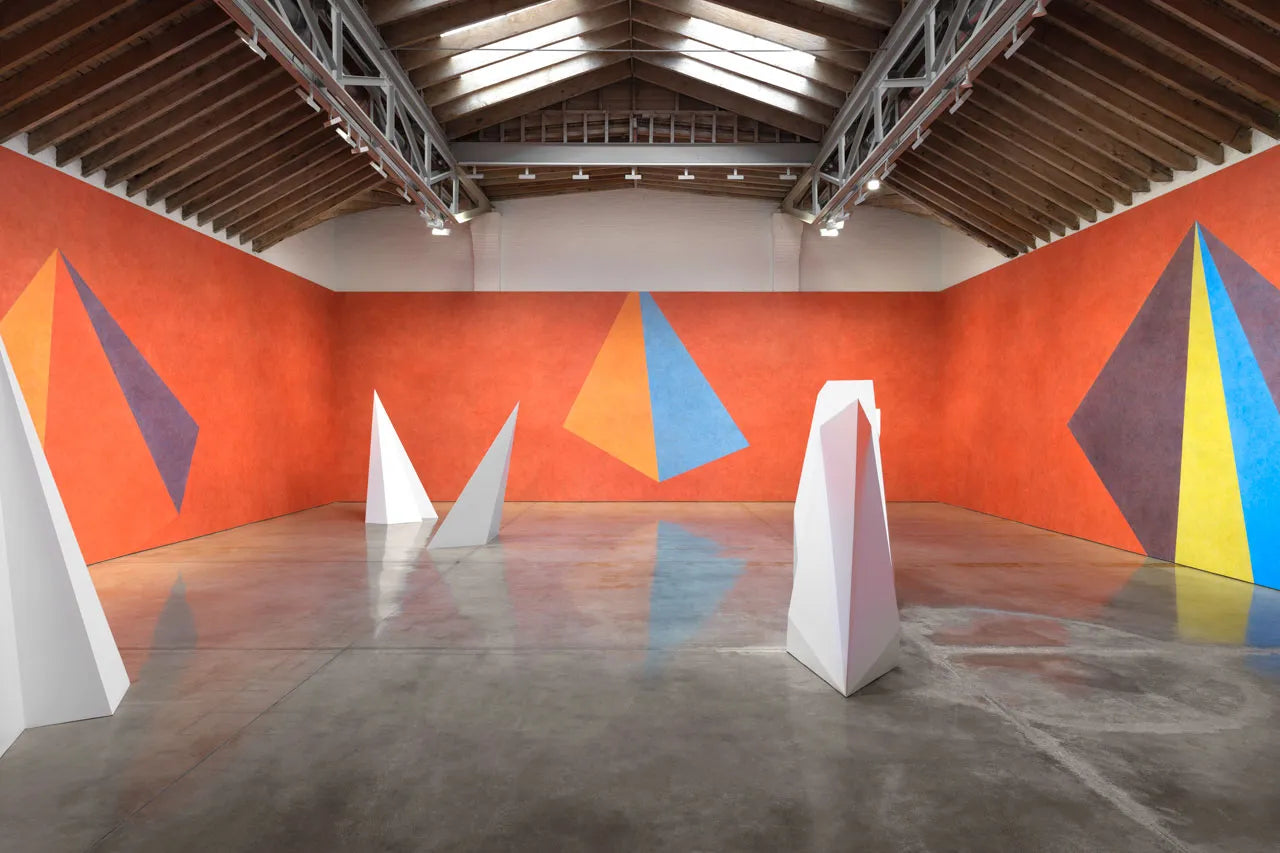
The Life and Work of Sol LeWitt
Sol LeWitt was an American contemporary artist known primarily for his contributions to the conceptual art movement and minimalist art. Born in 1928 in Hartford, Connecticut, in the United States, and died on April 8, 2007 in New York.
Sol LeWitt gained prominence for his works that explored geometric simplicity, abstraction and seriality. He is best known for his sculptures and conceptual installations, although he has worked in a wide variety of media, including painting, drawing and graphic art.
One of the distinguishing features of LeWitt's works is their emphasis on the concept or idea behind the artwork, rather than emphasizing the technical execution or the physical object itself. He developed a system in which he created detailed instructions for the production of his works, allowing other people to carry them out. This approach emphasized the idea that art need not be a personal expression of the artist, but an idea that could be executed by anyone.
LeWitt's works have had a major impact on the art world, challenging traditional conventions and exploring new approaches to artistic creation. His influence can be seen in many contemporary artists and he is widely regarded as one of the leading conceptual artists of the 20th century.
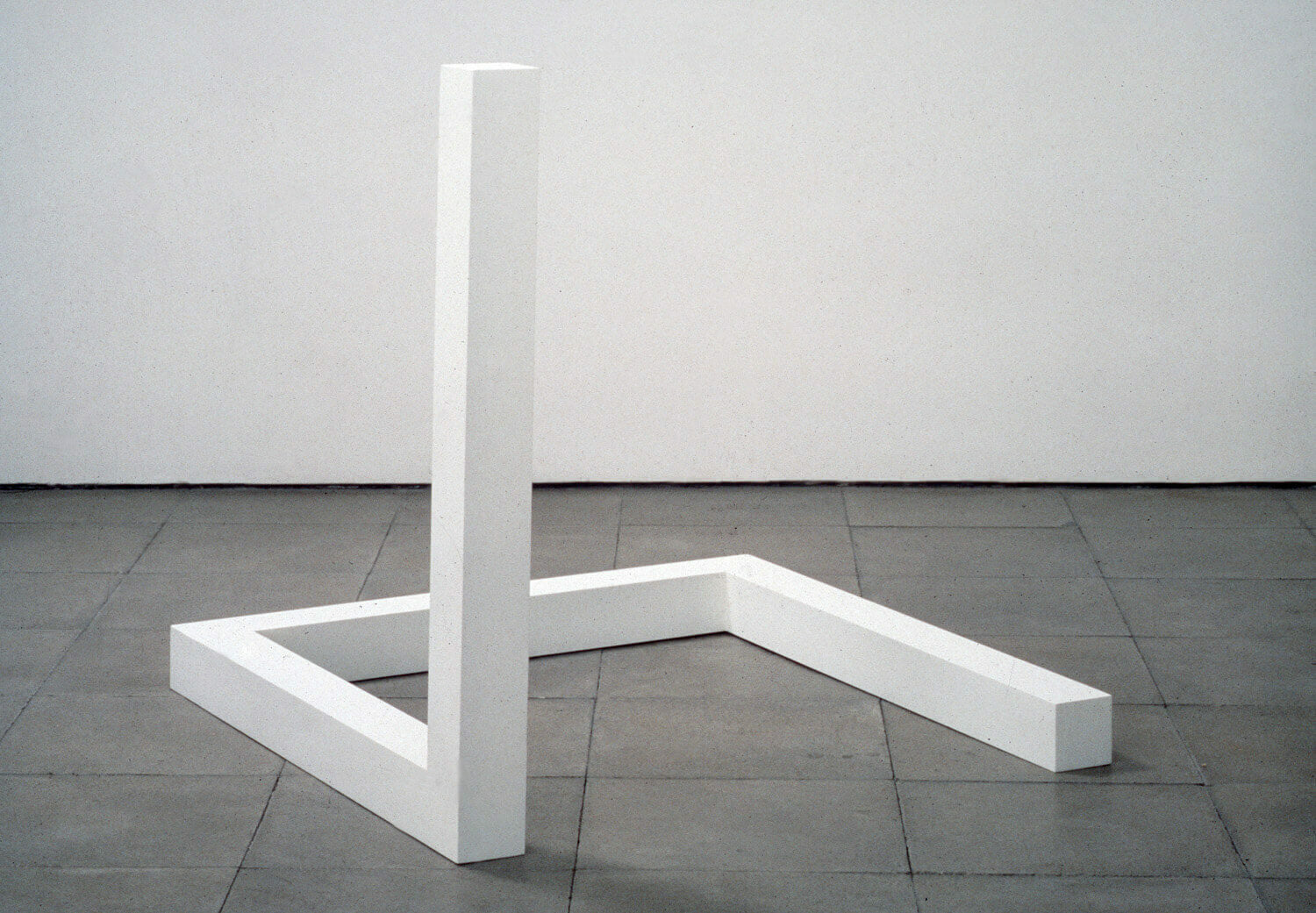
What are the characteristics of Sol LeWitt's works?
Sol LeWitt's works have several distinguishing characteristics. Here are some of the main ones:- Concept Art: Sol LeWitt was one of the pioneers of conceptual art, a movement that emphasizes the concept or idea behind the artwork rather than its physical form. Their works often consist of instructions or directives that can be carried out by others.
- Minimalism: Sol LeWitt is also associated with the minimalist art movement. His works are often marked by geometric simplicity, basic shapes and clean lines. Explored the reduction of visual elements to emphasize the essence and purity of form.
- Seriality: Sol LeWitt frequently worked with series, creating works that followed a systematic logic. He developed a variety of rules and procedures for generating different variations of the same idea or form.
- Drawing and Conceptual Art: Sol LeWitt was a master of drawing and often used drawing as a conceptual medium for his works. He produced precise and detailed drawings that served as plans or instructions for the execution of works.
- Scale and Environment: In addition to her works on paper and freestanding sculptures, Sol LeWitt has also created large-scale installations that occupy the entire space. These installations often involved walls, floors, and even three-dimensional space.
- Author Disclaimer: Sol LeWitt believed that the artist's role was to conceive the idea and instructions for the work, but the execution could be delegated to others. He emphasized the importance of the concept of personal authorship and promoted the idea that his works could be performed by anyone following his guidelines.
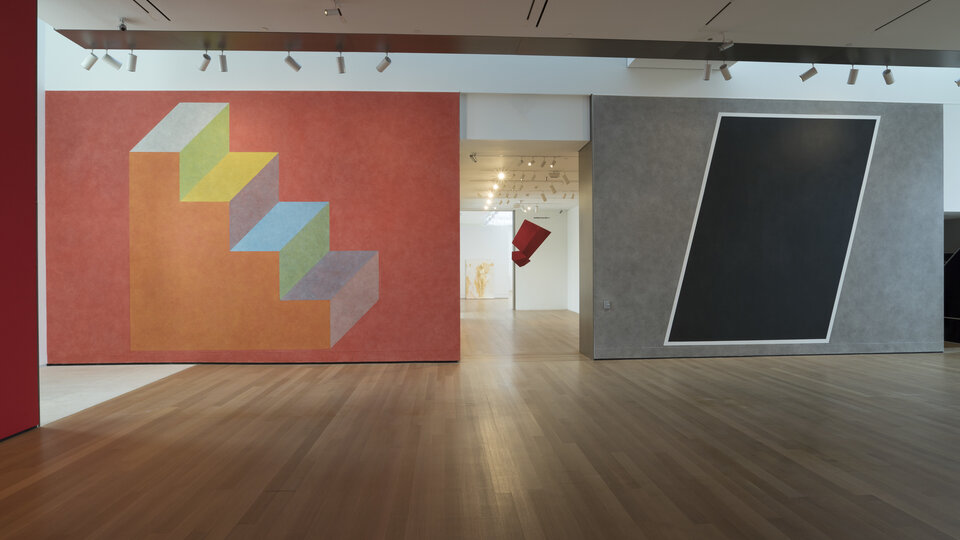
What are Sol LeWitt's influences?
Sol LeWitt has been influenced by a variety of sources throughout his career. Here are some of the important influences on your work:- Minimalist Art: Sol LeWitt was influenced by the minimalist artists of the 1960s such as Donald Judd, Dan Flavin and Carl Andre. He shared with them the search for geometric simplicity and the reduction of visual elements in his works.
- Concept Art: Sol LeWitt was one of the leading exponents of conceptual art, a movement that challenged the notion that art should be a tangible physical form. Artists such as Marcel Duchamp and Lawrence Weiner, who explored the importance of ideas and concepts in art, influenced Sol LeWitt's approach.
- European Modern Art: Sol LeWitt was an admirer of modern European art, especially the work of Dutch artist Piet Mondrian. I appreciated Mondrian's approach of using lines and geometric shapes to achieve spiritual and universal expression.
- Art of Antiquity: Sol LeWitt also found inspiration in ancient art, including Egyptian, Greek and Roman art. He valued the precision, order, and geometry found in these artistic traditions and incorporated them into his own work.
- Music and Mathematics: Sol LeWitt had a deep interest in music and mathematics. He appreciated the structure and logic found in music, as well as the mathematical relationships present in geometry. These influences can be seen in his works through series, repetitions and rational systems.
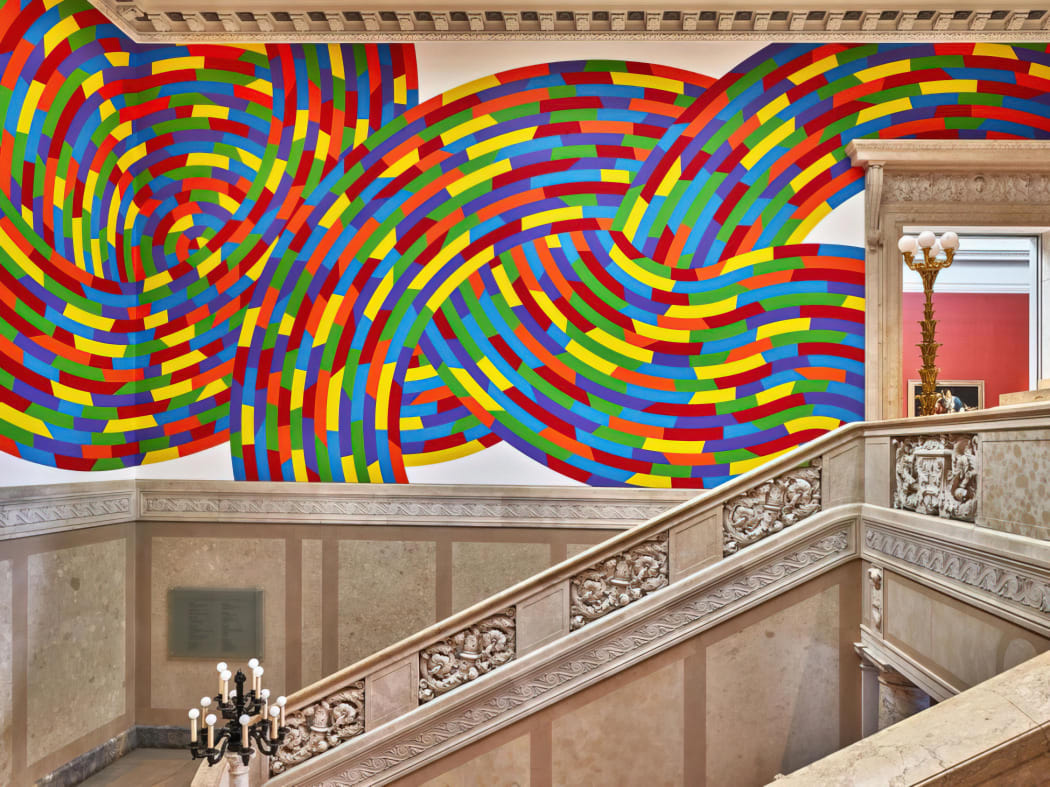
How did Sol LeWitt produce his artworks?
Sol LeWitt has developed a particular method for the production of his works of art, especially his sculptures and installations. He conceived the concept or idea behind the work and then created detailed instructions that allowed others to carry them out. This reflected his belief that execution need not be done by the artist personally and that the idea was more important than the physical authorship of the work.
When an institution or collector wanted to acquire a work by Sol LeWitt, he provided a set of written guidelines or detailed schematics. These instructions contained the necessary information for the execution of the work, including materials, dimensions, colors and construction methods.
For example, for one of his wall works, he might provide a set of guidelines that describe the placement of specific lines, shapes, and colors to be applied to the wall. Installation assistants or teams, following Sol LeWitt's instructions, created the work directly on site.
Sol LeWitt's approach to separating conception from execution allowed his works to be reproduced in different locations and sizes, increasing their accessibility and diffusion. He believed that, by following instructions, anyone could make his works, thus emphasizing the conceptual aspect of art. Sol LeWitt also created works in other formats, such as paintings and drawings. In these cases, he often carried out the execution himself, but still following logical and systematized procedures, maintaining coherence with his conceptual approach.
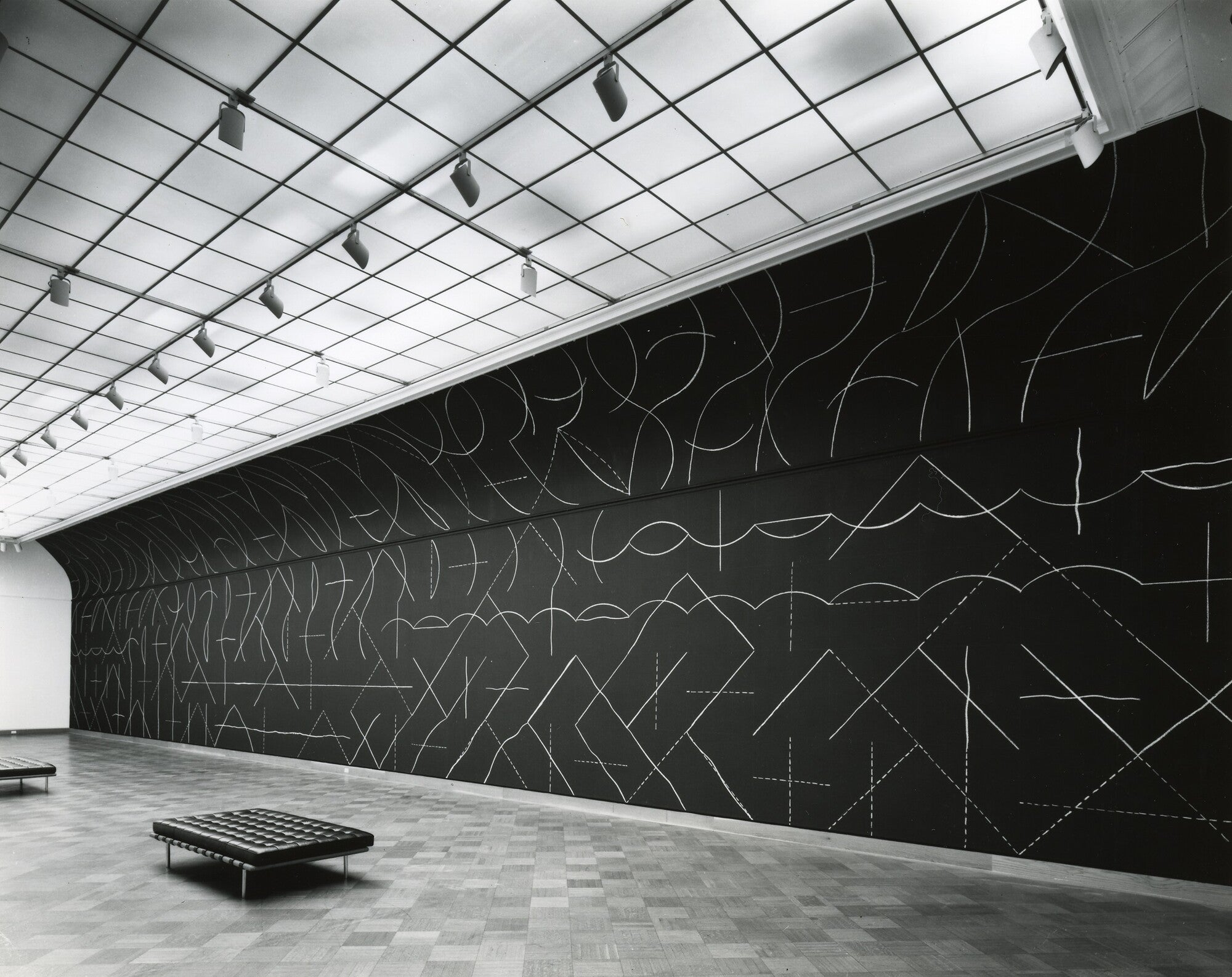
What was Sol LeWitt's art style?
Sol LeWitt's art style can be described as a fusion of minimalism, conceptual art and serial art. His approach emphasized geometric simplicity, the reduction of visual elements and the emphasis on the concept or idea behind the work.
In the context of minimalism, Sol LeWitt adopted basic geometric shapes such as cubes, spheres, straight lines and squares, looking for a clean and pure aesthetic. He explored repetition, seriality and regularity in his works, creating systems and rules that could generate a variety of variations.
In conceptual art, LeWitt emphasized the importance of the concept or idea in art, often separating the physical execution of the work from the creative process. His works consisted of written instructions or detailed schemes that allowed others to carry them out, emphasizing that the concept was more significant than personal authorship.
Sol LeWitt also explored the relationship between mathematics and art, using mathematical concepts and rational systems in his compositions. His approach was structured and logical, with an emphasis on precision and geometric relationships.
In summary, Sol LeWitt's art style can be characterized by a minimalist and geometric aesthetic, a conceptual approach and the adoption of systems and rules for the creation of his works. His contribution to contemporary art was remarkable and influential, leaving a lasting legacy.
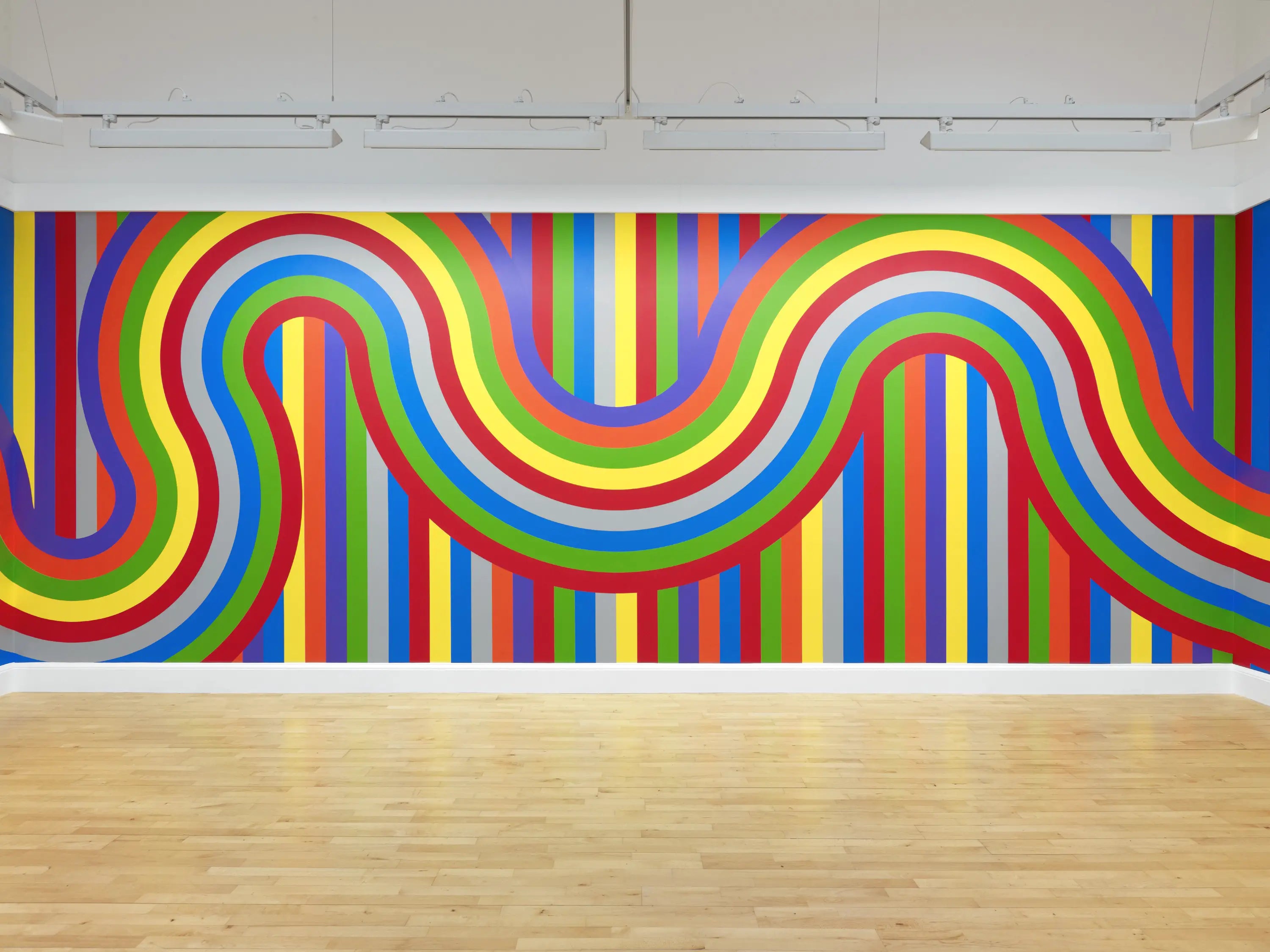
What are Sol LeWitt's most famous works?
Sol LeWitt has created numerous notable works throughout his career. Here are some of his most famous works:- "Wall Drawing" (1968): One of LeWitt's most iconic series, consisting of drawings made directly onto walls. Each drawing is executed following the detailed instructions provided by the artist.
- "Incomplete Open Cube" (1974): A three-dimensional sculpture that exemplifies LeWitt's minimalist approach. It consists of an open cube structure, creating an intriguing intersection of lines and geometric shapes.
- "Serial Project No. 1 (ABCD)" (1966): A conceptual work that explores repetition and seriality. It consists of a series of four identical structures, each with different color combinations.
- "Four-Sided Pyramid" (1997): A monumental sculpture made up of four sloping pyramid-shaped walls. The work is an expression of LeWitt's characteristic geometric simplicity and minimalism.
- "Wall Drawing #118" (1971): A large-scale installation consisting of a sequence of straight lines arranged progressively and randomly on a wall. The work exemplifies LeWitt's systematic and serial approach.
- "Lines in Four Directions in Flowers" (1979): Site-specific that combines geometric precision with the representation of nature. It features colorful lines arranged in a grid, creating an illusion of floral shapes. These are just some of Sol LeWitt's most famous works. His artistic output was extensive and varied, encompassing sculptures, drawings, paintings and installations, all reflecting his conceptual and minimalist approach.
